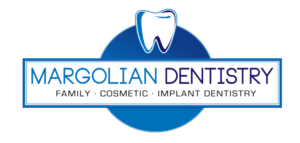If you were asked to name the most common disease in the world, you might reply heart disease, flu or perhaps cancer, but it is tooth decay. Although tooth decay may not seem serious, you will need to see your dentist in Whitby for diagnosis and restorative care. Most people will have to take time off school or work, and severe tooth decay can be costly to repair.
Tooth decay is treated by removing the decayed portion of the tooth and repairing it with a suitable filling material. However, over the past few decades we now know far more about this problem. Most people know that tooth decay begins when sugars in their diet feed bacteria in the mouth, and these bacteria release acid that erodes tooth enamel, eventually causing cavities. One way to reduce the risk of tooth decay is to reduce the number of bacteria by brushing and flossing teeth regularly. Another way is to make sure your diet doesn’t contain excess sugar. However, some people have problems with recurrent tooth decay despite practising good oral hygiene and avoiding excess sugar in their diet. In this case there may be other factors that increase the risk and which can be managed.
Saliva
One major risk factor is saliva and especially a lack of it. Did you know that your saliva glands release up to 2 litres of saliva each day? Saliva is essential for maintaining a neutral pH, protecting your teeth whenever you eat or drink something. People who don’t produce enough saliva (a condition called dry mouth) are less able to maintain a neutral pH, and it’s more likely their mouth will be acidic, so tooth enamel is dissolved more easily.
The Foods You Eat and When You Eat Them
Diet is another major risk factor, but it’s not only due to the amount of sugary foods you eat but when you consume them. Nowadays, the trend is towards eating smaller meals more frequently, and lots of people find that this fits in better with a busy lifestyle. However, frequently snacking on smaller meals increases the time when your mouth is more acidic. Whenever you eat something, acidity levels increase for at least half an hour afterwards until saliva and helpful bacteria ensure the pH levels return to a more neutral state.
Plaque Biofilm
Each day the surfaces in your mouth are covered with a thin layer of dental plaque containing microorganisms, proteins and fluids and other substances. The makeup of this biofilm can vary from one person to the next and can influence the risk of developing cavities. When you have a healthy mouth, excess fluids are neutralized, and helpful bacteria ensure harmful bacteria are kept in check. If your biofilm is more acidic, it makes it tricky for good bacteria to thrive, and instead, they begin to adapt to become more like bad bacteria.
Discovering If You Are at Risk of Tooth Decay
When you visit your Oshawa dentist, they might suggest assessing your risk of tooth decay and especially if you have had one or two cavities recently. For example, medications and some health conditions can sometimes cause dry mouth, and there are things you can do to alleviate this risk and to stimulate saliva flow. Another possibility is saliva testing in Ajax. If you prefer to snack in between meals, it might be helpful to think about choosing foods that are a bit more tooth-friendly and eating sugary foods as part of the main meal.
When you visit us here at Margolian Dentistry, we can certainly review your oral care routine and may suggest using a specific toothpaste or perhaps an antimicrobial mouth rinse. By working with you, we can hopefully reduce your risk of cavities in the future. If you do need a filling, we only use the most advanced and natural-looking restorative materials to protect and restore teeth.

